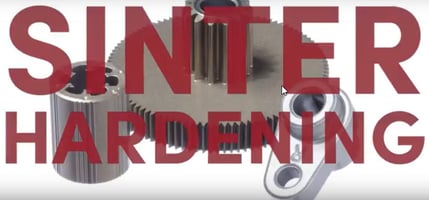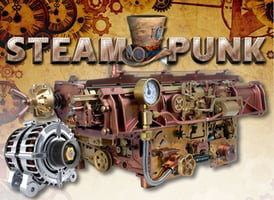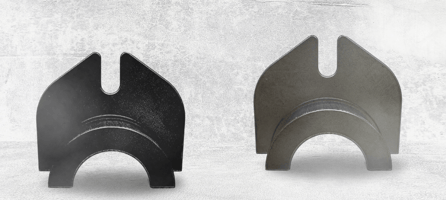Improvements on an Ancient Process
Modern Methods of Heat Treating Sintered Steel

Humans have been heat treating metals for ages. The oldest known example of discovered tempered metal was a pickaxe handle dating from 1200 BC to 1100 BC, found in Galilee.*
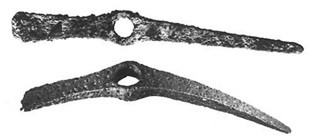
Heat treating metals is not a new process. Ancient civilizations have long understood that quenching steel imparts different properties on the material. Quenching steel makes it hard, yet more brittle. Hardened steel has great wear characteristics and resists deformation which are desirable properties in many applications.
Though times have changed, the nature of steel has not. In modern times, the process of quenching and tempering steel is still as useful as it was a thousand years ago. Many applications still benefit from a form of steel that is hardened, resists wear, and resists deformation.
Manufacturers of sintered parts have used the quench and temper process to impart heat-treated properties on their products for what feels like centuries. The process of heating a steel part and quenching in oil is the standard method of hardening a sintered part. BUT that method has drawbacks. Sintered parts are porous, and will absorb the quench fluid. This may be problematic for downstream processes. Heating a product and rapidly cooling can also impact the dimensional stability of a product, warping thin-walled parts and making ovals out of what used to be circles. But what if there were a better way? Could the science of making steel be improved after thousands of years? By the miracle of modern metallurgical advancements, there is.
Advancements in material alloy systems allow manufacturers of sinter parts to produce a hardened component directly from the sintering furnace, eliminating the need to heat treat after the sintering process. Components may be rapidly quenched inside a sinter furnace, at the same time the part would otherwise be cooling to room temperature anyway. Customers and manufacturers alike benefit from taking advantage of the sinter hardening process. It allows for lower cost components by eliminating post-sinter processing. It eliminates residual heat treat fluids that may remain in the product. And it improves dimensional stability.
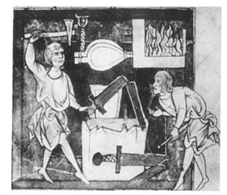
Are you ready to ditch the conventional quench process? Can you benefit from cleaner parts? The experts at Atlas have the knowledge and experience to guide you to a better part. Give us a call today to find out how you can benefit from cleaner, more cost-effective components.
Interested in learning more? In 2021, Dr. Craig Stringer presented original research on the benefits of sinter-hardening at the ASM International Heat Treat conference. You can find more information HERE. Curious about the advantages of sinter hardening? Find out how the experts at Atlas took advantage of the sinter harden process to solve a customer problem while producing a BETTER COMPONENT HERE.
- Information provided by Bodycote, plc

